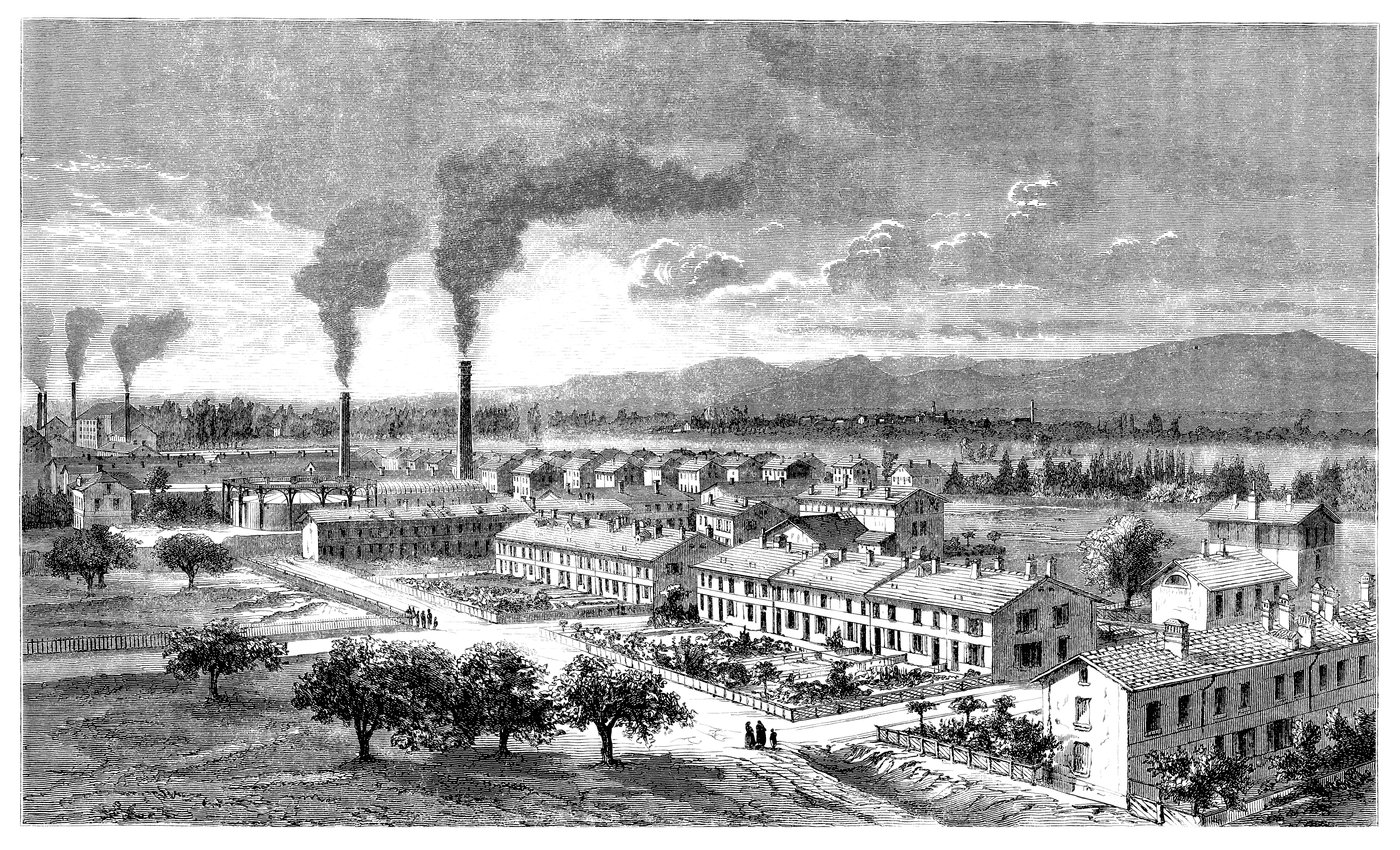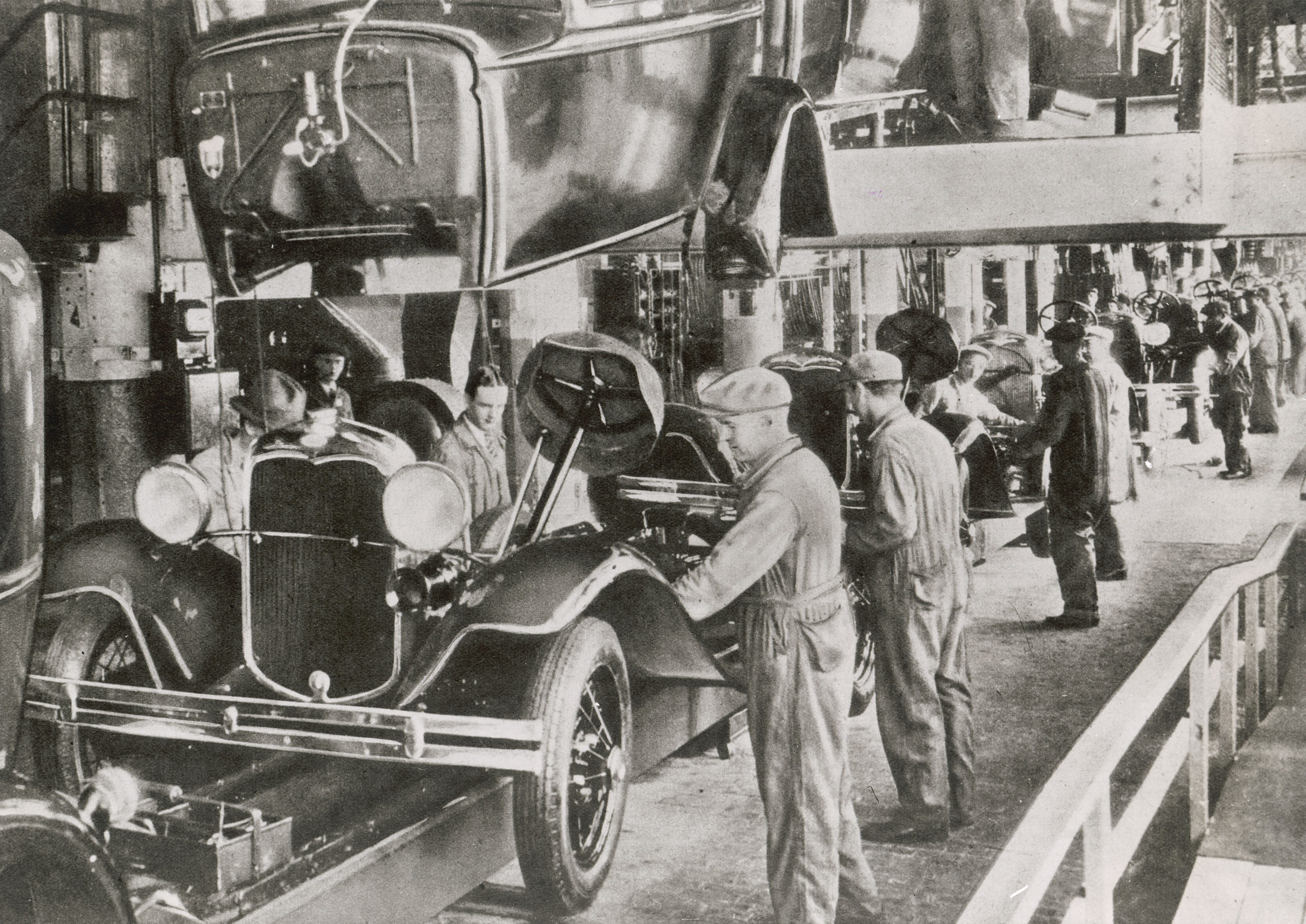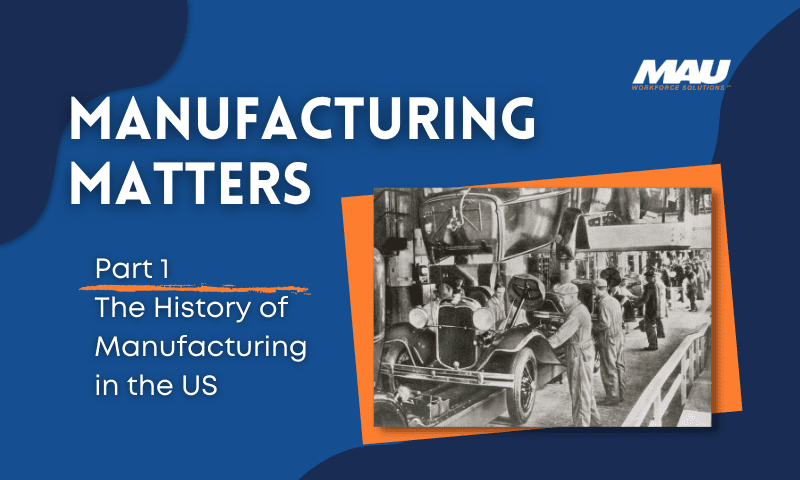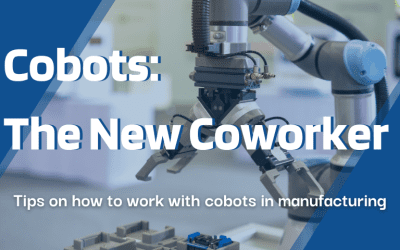Manufacturing is an important and vital for the American economy. In this series, we will be looking at the many ways manufacturing still helps our country. We will begin by looking at the history of manufacturing in the U.S.
.png)
With more jobs entering the digital age, many Americans may not be aware of the importance of manufacturing in our country. Factories and mass production are still important to the U.S. economy and have a proud legacy in developing our country to the world-power it is today. Factory work can trace its roots in the U.S. back to 1785, when Oliver Evans built the first automatic flour mill, but it wasn’t until after the Civil War that the U.S. saw a boon in manufacturing.

After the disastrous war, the United States was looking for a way to rebuild. Industrial growth played a major part in helping the country recover. Machines replaced hand labor as the means of manufacturing, increasing the production capacity immensely. As more factories began to grow, many people began to flock to urban centers for employment. The average income and population began to grow exponentially, and the formation of the middle-class first began to take shape in the U.S.
The growth in manufacturing also led to more goods being produced for cheaper wages. With the growth of the middle-class, more people became able to buy these mass-produced goods. The creation of the modern assembly line in 1913 made manufacturing even easier which led to an increased demand for manufacturing jobs.

Manufacturing was also a key component in America’s success during World War II. From Maytag to Rolls-Royce, American manufacturers stopped producing consumer goods and retrofitted their factories to produce tanks, planes, fighter engines, and other military weapons. This increase in manufacturing also helped pull the country out of the Great Depression and secure our victory.
Manufacturing saw a change in the later half of the century with the introduction of computers into the assembly line. Computer technology began being used in manufacturing in 1953. In 1958, the introduction of integrated circuits allowed a higher level of processing, laying the groundwork for more industrial automation. In 1979, the employment of American manufacturing industry peaked, and the new digital age of manufacturing begins in 1981 when the first PC was introduced.
Manufacturing continues to be a major contributor to the American economy. Vibrant manufacturing leads to more research and development, innovation, productivity, exports, and middle-class jobs. It also generates more economic activity than other sectors. For every dollar of domestic manufacturing spent, another $3.60 of economic activity is generated, and for every manufacturing job, there are 3.4 jobs created in nonmanufacturing industries. As we look to a new age of business, it is important that the country continue to put an emphasis on our manufacturing jobs.
Sources in this article were found at:
A Brief History of the American Manufacturing Industry + Infographic
First Person: The Importance of Manufacturing to the U.S. Economy
MAU is proud to offer many jobs supporting the manufacturing industry. {{cta(‘0edb373e-bf79-4ee5-a0e9-d2297115e5a5’)}} to see some of our openings.




-400x250.png)